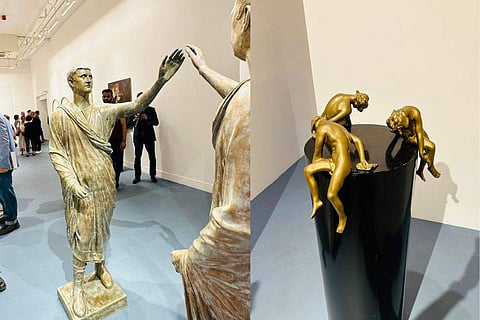
- LIFESTYLE
- FASHION
- FOOD
- ENTERTAINMENT
- EVENTS
- CULTURE
- VIDEOS
- WEB STORIES
- GALLERIES
- GADGETS
- CAR & BIKE
- SOCIETY
- TRAVEL
- NORTH EAST
- INDULGE CONNECT

The Grand Italian Vision: The Farnesina Collection, an art collection curated by renowned art critic Achille Bonito Oliva recently opened in New Delhi, after coming out of Italy for the first time, earlier this year. According to reports, the collection features 63 works of art by many celebrated artists, including Carla Accardi, Afro, Enzo Cucchi, Arturo Martini, Alberto Burri, Mirko, Pietro Ruffo, Sandro Chia, and Fabio Mauri.
The ongoing exhibition at the Bikaner House in Delhi features pieces like a futuristic bronze sculpture titled ‘Unique Forms of Continuity in Space’ by artist Umberto Boccioni. Another piece on display at the exhibition is a bronze version of the Eutarascan statue by Michelangelo Pistoletto.
The collection was originally displayed at the Ministry of Foreign Affairs of Rome, the Palazzo della Farnesina. The collection had more than 530 pieces by 280 artists collected by then secretary General Umberto Vattani. The collection made its international debut in Singapore in February 2023, then it travelled to Tokyo where it was housed from March to April.
The exhibition called ‘The Grand Italian Vision,’ which features avant-garde sculpture, mosaic, painting, photography, and installations, also commemorates the 75th anniversary of diplomatic relations between India and Italy, according to Italian ambassador Vincenzo de Luca, who spoke at the opening ceremony.
Talking about the collection, Achille Bonito told media sources, “We are here to allow art to do other things, to spread information and to change things. What is art? Art is a massage of the atrophied muscles of collective sensibility. Art has no limits, it has the ability to change things. It occupies an important historical moment. The Farnesina collection is special because it has the ability to spread and it is less cultural and more political. Art definitely celebrates the value of cohabitation and coexistence.”